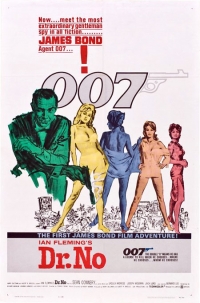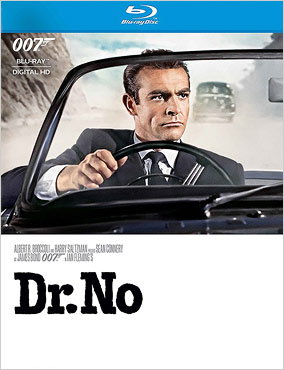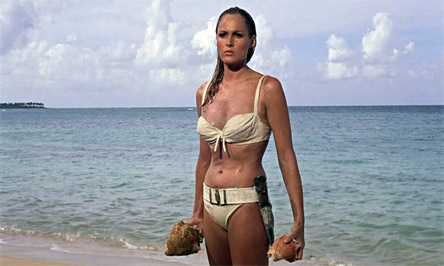
Coate: In what way was Sean Connery an ideal choice to play James Bond?
Burlingame: I’m sure my colleagues in this group are better equipped than I to answer this question in historical and socio-cultural detail. I can only say that for me, Connery’s toughness, his ruthlessness, his obvious comfort level with fists and firearms, his way with women, all seemed completely in sync with the Bond I had encountered in the Fleming novels — and, as depicted on screen, created an iconic screen persona that resonates decades later.
Cork: Sean Connery understood that Bond was a character who was defined by his confidence, not by his self-doubt or flaws. He was a man who came up from a hard-scrabble life in Edinburgh, Scotland. Despite his physique, he had washed out of the Navy. Focusing on bodybuilding, he took a chance on an audition as a chorus boy for the touring company of South Pacific. Offered a tryout for a major British pro football team, he took valued advice and decided to pursue acting. He remade himself into an actor. Nothing was handed to him on a silver platter. He studied the classics, he watched the pros who had attended the Royal Academy of Dramatic Arts, he learned the craft. He proved to have the perfect combination of the arrogance one obtains from being a self-made man and the swagger of having grown up on streets where fist fights were common. He held within himself the disdain and jealously for the moneyed class whom he felt had taken advantage of the British and Scottish working classes for generations. Meeting Fleming, Connery thought he was a fascinating snob, and he tried to avoid that aspect of Bond’s character. He worked with Terence Young to find a way into the character, and that came through humor. Connery’s Bond saw through the false sense of moral superiority of the British upper classes and mocked them not only with his one-liners, but by completely undermining the very notion of the British sense of “fair play.” His Bond would spy, but taunt a woman for listening at a key hole. Just because Professor Dent is supposed to be part of the “old boy” network with all the right friends at the Queen’s Club, he does not escape Bond’s suspicions. There is a wonderful expression Connery gave to Bond, one that he used on friend and foe alike, a look that said, “I think you are full of shit.” You see it when he looks at Pleydell-Smith upon his arrival in Jamaica and also at Miss Taro, but never with M or, initially, Quarrel (until the drinking starts). That is a very subtle thing for an actor to pull together, to create a character who is so fully formed that his worldview can be captured in those small interactions. It is a great performance, and without it I doubt we’d be watching James Bond films today.
Pfeiffer: There were many actors who were considered for the role of Bond. Some of the legendary stories you’ve read about them are true and others are bogus. However, it is true that Richard Johnson was actually invited to Eon’s offices in London to discuss the role. Some years ago I befriended him when he was a guest on Cinema Retro’s Movie Magic tour of England. One of the events was a screening of The Haunting at the manor house where the movie was filmed. In the course of interviewing Richard about the film, I asked him about his near-miss with Bond. He said he understood why he was offered the role because he was a classically trained actor who had attended RADA. He turned it down because he didn’t actually see the potential in the role. In fact, no one did. I don’t think anyone ever thought it would go beyond a few films and actors often didn’t want to be confined to a specific role. Johnson said he would have played the role all wrong (i.e. far too seriously). He felt that Connery, who was not locked into formal acting techniques, was more responsive to playing the role with a degree of flippancy that Johnson would have been opposed to. I think he said it best when he told us, “I was so right for the role, I would have played it wrong. Sean was so wrong for the role, that he played it right.” That is the most succinct explanation I’ve ever heard.
Rubin: Connery was just what Broccoli and Saltzman needed to flesh out James Bond: they called him a “ballsy Englishman.” Up until that point, for the most part, Brits were gentlemanly, elegant, polished, well-appointed well-dressed men, but they weren’t known for their action skills. Connery changed all that, almost overnight — introducing a whole generation of Commonwealth actors who were good with their fists. With Terence Young’s help, Connery just soaked up the role like a sponge. He wore the clothes well, projected a certain sophistication with ordering wines and caviar, but didn’t overdo it. As screenwriter Tom Mankiewicz once said, when Connery walked into the bar, you knew he was capable of killing someone. He projected raw physical power — something that has also been a hallmark of Daniel Craig.
Rye: The fact that Sean Connery was the antithesis of Ian Fleming’s James Bond made him, for a lot of people in the film industry, the entirely wrong person for the role, and accordingly he took a lot of outright insults on the chin from all and sundry who found the idea of the brawny Scot from Edinburgh being cast as Secret Agent 007 laughable in the extreme. However, what those people failed to see was that he was a highly competent actor, although still honing his craft as a big screen actor, and a sexual charisma that jumped off the screen at audiences who had never seen his like before. When Director Terence Young was interviewed in the early 1990s he said: “If you asked me what were the three ingredients for James Bond, it was Sean Connery, Sean Connery and Sean Connery!” If any other actor had been cast as James Bond in Dr. No we wouldn’t be having this discussion now in 2017 — it really is as basic and simple as that!
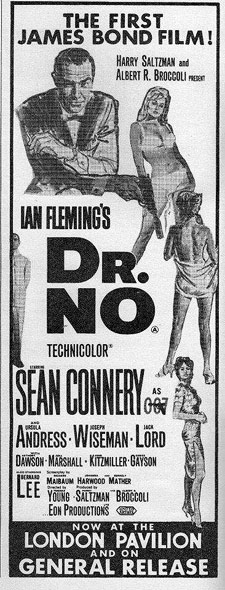 Coate: In what way was Joseph Wiseman’s Dr. No an effective or memorable villain?
Coate: In what way was Joseph Wiseman’s Dr. No an effective or memorable villain?
Burlingame: I loved Wiseman’s performance; it’s a highlight of the film for me. I didn’t know his work prior to this, and I understand that he later disdained the part (why did he take the role? Surely he must have found it fun to play); but he was an ideal Dr. No, from his look to his no-nonsense demeanor. And his performance here helped me to appreciate his later work, notably in the great Jerry Goldsmith-scored TV movies Pursuit and QB VII.
Cork: Wiseman set a very high bar for Bond villains to follow. He’s amazing in the role. Of course, he follows a long line of non-Asian actors who put on “yellow-face” which means on one level we can look at the performance as part of the Western cliché of Asian “inscrutability.” On another level, he plays a half-German / half-Chinese character who has rebuilt himself after a near-death experience, a man who has an almost supernatural control over his emotions. Think of him as an early Iron Man gone very wrong. I love the omniscience of his character, the way he knows everything about Bond and Bond’s actions. I am glad there is so little humanity in his performance. The dinner table scene between Dr. No and Bond ranks as one of my favorite hero and villain encounters. Wiseman was a great actor who understood that film acting was all in the subtleties. It is very hard for an actor to play a character like Dr. No with so little movement, so little expression, yet still convey so much with just a flick of direction in his eyes or a brief pause before a single word. It is a masterful performance.
Pfeiffer: The Bond producers were guilty of the widespread practice that still exists today: casting Caucasian actors in key roles as Asian characters. However, the film demanded an experienced, well-known character actor and there simply weren’t many Asian actors at the time with the kind of name recognition that Joseph Wiseman had. He was an acclaimed actor of stage, television and the big screen and his presence in the title role added another layer of respectability to the production. Wiseman is brilliant in the role. Once you are introduced to him late in the film, he tends to dominate most of what follows. His performance is so commanding that the viewer probably doesn’t realize how limited his time is on screen. More importantly, critics loved the old Flash Gordon-type villain he portrayed and he set the mode for those classic baddies who followed.
Rubin: Joseph Wiseman was a terrific villain. He set the prototype for many future Bond adversaries. Extremely wealthy, he surrounded himself with a virtual army of retainers, thugs, killers, informers, and secretaries. He’s ruthless, heartless, and egocentric. He built an island fortress from scratch. He hatches a nefarious scheme to topple American missiles, and he manages to capture Bond and Honey, allowing him to show off his scheme. I thought he nailed the role.
Rye: Joseph Wiseman brought a quiet deadly almost robotic manner to the role of Dr. No, and beautifully underplayed No’s sense of repressed anger and violence; he’s a man who’s been snubbed by the Superpowers and is intent on taking his revenge.
Coate: In what way was Ursula Andress’ Honey Ryder a memorable Bond Girl?
Burlingame: Just think about that incredible introduction as she emerges from the water for the first time. It’s one of the great moments of ‘60s cinema.
Cork: “A memorable Bond Girl”? Ursula Andress defined the role of women in the James Bond films. Not only did she look beautiful, she gives a great physical performance (and Nikki van der Zyl, who dubbed her lines for the English-language release, gives Honey a perfect voice). Andress is a hypnotically beautiful actress, but more than that, she understood how to act with her eyes. She was cast off of a photo taken by her then husband John Derek, a wet t-shirt photo to be exact. Harry Saltzman saw it and brought it to Cubby, who completely ignored it until, desperate one day he started plowing through pictures trying to find an actress with the right athletic look. When he found the picture, he called Max Arnow of Columbia Pictures. Arnow told Cubby that everyone tried to cast Andress, but she was scared to act in films and had backed out of more than one. Second, he said she’s the most beautiful woman anyone had ever seen, that pictures don’t do her justice, but that she has a voice like a Dutch comic! Cubby and Harry, undeterred, sent her the script. It arrived one day at her husband John Derek’s house. Kirk Douglas was visiting and he said they should do an impromptu reading. Here’s what Ursula told me about that: “We were all, you know, there on the floor, laughing and having fun with it, and then Kirk said, Ursula, you have to do it. It’s fun, it’s easy, you have to do it.”
Pfeiffer: We are finally now in an era in which audiences embrace female action heroes. That wasn’t the case when Dr. No was released. The term “Bond Girl” has sometimes been used derisively in the sense that, in some quarters, Bond’s leading ladies are painted as shallow, brainless beauties. In fact, in the overwhelming number of cases that wasn’t true. Ursula Andress (who was dubbed for the role despite being able to speak fluent English) set the high water mark for a Bond heroine. She’s intelligent, courageous and self-reliant. She’s also comfortable with her outlook on sex which would be deemed promiscuous by the standards of the day. We don’t actually see Honey and Bond as lovers during the course of the adventure because for the most part their lives are in danger. However, the last scene in the film clearly implies that they will finally get up close and personal now that the crisis has passed. Andress in her white bikini represents one of the great screen entrances of all time, matched by Connery’s introduction in the film, which was said to have been inspired by Paul Munee’s first appearance in the film Juarez.
Rubin: Ursula Andress made what was arguably the greatest entrance of any actress in the history of movies. Coming out of the water in that tight, dripping, white bikini was just stunning to this teenage American boy. How could she not make an impression? She’s also very believable as an island girl, very knowledgeable about sea shells and marine life, and a great teammate for Connery. Certainly, a nod should also be given to Nikki Van Der Zyl for completely re-voicing Andress.
Rye: One only has to look at Ursula’s face, and her body dressed in that brief white bikini to answer that question. Anyone not being aroused by her appearance in Dr. No must have been dead above and below the belt!
Coate: Where do you think Dr. No ranks among the James Bond movie series?
Burlingame: It’s a difficult question. It might not be my first choice, considering that the series grew by leaps and bounds as Broccoli, Saltzman, Young, Connery, editor Peter Hunt et al. found their way over the next few movies. I still think Goldfinger is the pinnacle of that 1960s period and I would probably watch all of the other ‘60s films before the first installment. But there is still much to recommend about that first film, not the least of which are the actors we’ve just discussed. So I would say that, of the 24 official Bond films, Dr. No would be in the first half.
Cork: When I ranked them all in 2012 with my son, I ranked it fourth. My son, who was 12 at the time, ranked it seventh. Many modern viewers are much harsher on the film. I love the way it draws you into Dr. No’s exotic, seductive, and very deadly world.
Pfeiffer: I would certainly rank it in the top ten. The film has aged amazingly well, as have all of the early Bonds. Aside from some fashions and vintage cars, the basic scripts could easily be converted into contemporary thrillers. Because it was the first film in the series, some of the trademark characteristics we would come to associate with the franchise were not in place yet. The formula was just being established and therefore was not perfected. So there is an oddball quality to some aspects of the production when compared to the comfortable template the movies that followed would adhere to. That’s also part of the film’s charm. We’re watching the birth of an iconic screen hero.
Rubin: It has a dated element to it, but that adds to its charm. This is, indeed, early Bond. There’s no digital effects, and Bond doesn’t act like a robot with gadgets. He sits down in a Jamaican hotel room and pours himself a drink, then goes to bed, eventually battling a poisonous spider, which he pounds into pulp. There’s a rawness to Connery and rawness to the sexuality between him and Sylvia Trench, Miss Taro and Honey. It’s just refreshing to see the story just play without distractions. The repartee with M, Q and Moneypenny is business like but fun. I personally like the music very much. I would rank it in the top ten Bond films of all time.
Rye: It’s a little rough around the edges in various places and lacks the sophistication of, say, Goldfinger or Thunderball, or the quality screenplay and cast of From Russia with Love, but it’s still a cracking piece of entertainment, and Connery makes it the watchable exciting adventure it still is.
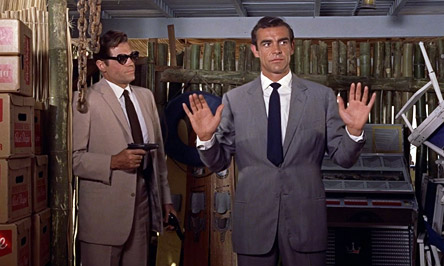
Coate: What is the legacy of Dr. No?
Burlingame: From my music-centric vantage point, my first thought is the introduction of the James Bond Theme as composed by Monty Norman, arranged and conducted by John Barry. It’s easy to forget that that one minute and 45 second piece of music is now among the most significant and impactful pieces of movie music in the 20th century. What Barry created by taking the Norman tune and embellishing it (partly pop, partly jazz, partly orchestral) was a huge breakthrough in scoring action-adventure films, something he expanded upon for the rest of the Bond films in the 1960s.
In a more general sense, the film not only launched one of the biggest, most successful movie franchises in history, it single-handedly defined the spy film genre for many years. It launched several careers on both sides of the camera and look, after 55 years we are still debating and discussing the Cinematic Bond as created by Dr. No. How many other movies can boast such a legacy?
Cork: There are only a handful of movies that change cinema, that re-wire popular culture, that last on for generations. Dr. No is one of those films.
There were very profitable film series prior to James Bond. Tarzan, Charlie Chan, Mr. Moto, the Road movies, all the way to Ma and Pa Kettle and the Francis the Talking Mule films. These films were generally made by the “B” units of the studios. Some, like Tarzan, started as high-budget “A” films, then migrated to the “B” units as box office fell. In many ways, Dr. No was a “B” picture for United Artists (although the way UA was set up, there were no “A” and “B” units).
One of the producers (Cubby Broccoli) had long been making the kind of films that looked like they could have mostly been taken from articles in men’s adventure magazines of the era. Broccoli (and his producing partner Irving Allen) made films inexpensively, using embargoed studio profits trapped in Britain under the Eady Levy tax scheme. That Eady Levy money had to be spent on “home-grown” British films made by mostly British crews. This investment elevated the British film industry to remarkable heights. While Broccoli’s modestly-budgeted films like Safari and Odongo did well at the box office in the US as mostly second-billing fare, Eady money was soon financing massively budgeted top-billing films like The Bridge on the River Kwai, Sons and Lovers, The Guns of Navarone, Mutiny on the Bounty, and Lawrence of Arabia. Cubby Broccoli very much wanted to be making larger films in this mold. His first attempt, The Trials of Oscar Wilde, failed, but he saw great potential with Bond. As importantly, United Artists also saw that potential.
Everyone succeeded beyond their wildest expectations. The success of Dr. No led to increasing budgets for the Bond films that followed. Although not thought of in this form at the time, Dr. No launched the idea of the modern studio franchise. These films are now referred to as “tent pole” films. They are all but guaranteed to not only turn a profit, but to create so much profit that they cover the losses from other films at the studios.
Dr. No begins the process of shifting studio resources from big-budget “prestige” films (usually based on major best-selling books, or big-budget musicals adapted from Broadway shows) to big-budget films aimed basically at the imagination of 14-year-old boys. By the mid-1970s every studio considered successful films to be the potential launching point for a series that, like Bond, could draw steady audiences every year or two. Broccoli also urged United Artists to launch the Bond films in as many theaters as possible, advertising nationally, capitalizing on the built-in audience. Very few films buck that formula today.
Dr. No not only gave us the cinematic James Bond, but it gave us much of the film industry we have today. That’s quite a legacy.
Pfeiffer: Dr. No’s legacy is that of an action adventure film that influenced the movie industry in ways that can hardly be imagined by younger audiences. Were it not for the Bond movies, who knows if the action heroes we revere today would even be in existence. Dr. No launched the Bond phenomenon, which in turn launched the spy movie boom of the 1960s. The influence is still felt today. Spy movie crazes come and go and right now they are hot again. The Mission: Impossible films are still very popular today — but how many people realize they wouldn’t exist if it wasn’t for the classic TV series that would not have existed without the success of the 007 franchise? Prior to Dr. No, espionage films generally showed the realistic, drab side of spying. Bond made it glamorous…and often preposterous, but that was part of the fun. Today most of the big screen spy heroes revel at some point in glamour. There’s almost always scenes involving people dressed to the nines in exotic locations and engaging in exotic and erotic activities. It can all be traced back to Dr. No.
Rubin: Dr. No’s legacy is that it was the birth of Bond — a very good, memorable birth that set the tone for many James Bond adventures to come. It will be remembered for introducing Sean Connery and Ursula Andress to international audiences, and initiating the most successful film series in history.
Rye: The twenty-three films that followed it, some better, but more mostly worse, and some, a lot worse!
Coate: Thank you — Jon, John, Lee, Steven and Graham— for participating and sharing your thoughts about Dr. No on the occasion of its 55th anniversary.
The James Bond roundtable discussion will return in Remembering “Die Another Day” on its 15th Anniversary.
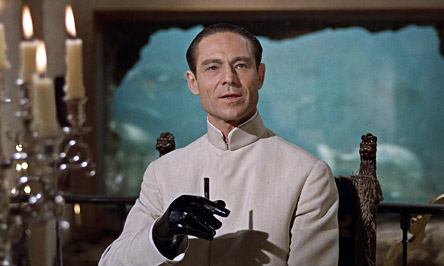
IMAGES
Selected images copyright/courtesy 20th Century Fox Home Entertainment, CBS-Fox Home Video, Eon Productions Limited, Danjaq LLC, MGM Home Entertainment, United Artists Corporation.
SPECIAL THANKS
Sheldon Hall and John Hazelton
- Michael Coate
Michael Coate can be reached via e-mail through this link. (You can also follow Michael on social media at these links: Twitter and Facebook)


